Key Performance Indicators or KPIs in software development help you assess the progress of your software development. When you set goals, you need to check to see if you’re crunching them constantly. The same applies to software development. Every successful software development life cycle (SDLC) begins with setting measurable goals.
KPIs aren’t always the same for every development team. While it acts as a guide to measure success, each organization must set metrics relevant to the current project and overall business objectives.
However, some are cut across the board if you want to build, deploy, and scale your software successfully. We’ve compiled the top ten KPIs for software development that your team needs to be looking at.
This will help your developers understand the metrics that matter most before, during, and after software development.
- What are KPIs in Software Development?
- Why are KPIs in Software Development Important?
- Types of KPIs in Software Development
- Top 10 KPIs in Software Development
- Tools to Track KPIs in Software Development
- Conclusion of KPIs in Software Development
- KPIs in Software Development FAQs
What are KPIs in Software Development?
KPI stands for Key Performance Indicator. It is a quantifiable measure of the performance of your business or a specific project over time. KPIs provide goals for teams to aim at, milestones to track progress, and insights to help business leaders make informed decisions.
Software development KPIs allow you to track the development production by monitoring present performance and the goals you intend to achieve. This means setting measurable goals before commencing software development is crucial to success.
Are you hitting periodic milestones? Is the team at the right stage of the roadmap? Will you release the minimum viable product (MVP) at the given time? Will the project cost more? Are there going to be any delays? Answers to these questions help you set and track the right metrics.
Although crucial KPIs apply to most teams, every manager must adjust these indicators to the needs of the software and emerging industry trends.

Why are KPIs in Software Development Important?
Like any other project, setting and evaluating targets means you’re intentional about completing the project. Here are reasons why KPIs for software development are important:
To Track Progress and Desired Outcome
Keeping an eye on software development KPIs highlights the progress of the development process and how close you are to reaching your desired outcome.
When you track these indicators periodically, you know where you stand weekly, monthly, or quarterly. Teams will know whether they’re moving in the right direction or at the point they should be at this stage of the development phase.
To Detect and Adjust Software Challenges Quickly
In addition, KPIs in software development identify missing elements and critical areas that need improvement. This will help you address bugs or problems that are most important during development and not after the software has been deployed into the market.
To Align Business Objectives With Software Development Goals
Measuring KPIs makes it easier to adjust business strategies early in development. They help software development teams align with business objectives. Most business leaders don’t know enough about software development processes.
That’s why software development KPIs ensure business leaders work collectively with the development teams to achieve their company’s strategic goals.
For example, ClickIT’s DevOps and software development collaborate with clients for a seamless development experience. Our experienced team can automate software development, reduce costs, and decrease time-to-market.
By sharing key performance indicators in software development with stakeholders, they track development and compare it to their business plans for a frictionless experience.
KPIs also help the business to analyze patterns. For example, business leaders can predict when the slowest quarter might be.
To Boost Team Productivity and Motivation
Having a set of KPIs in software development will optimize workflows and boost team productivity. Every developer on the team understands their role and how success will be measured. This streamlines project management for team leaders and increases the productivity of team members. It also means software development team leads can identify underperforming or over-performing team members.
You might also be interested in: Tips for Remote Work
A good KPI must be SMART:
- It must have a Specific purpose
- It must be Measurable
- It must be Achievable
- It must be Relevant
- It must be Time-bound.

Types of KPIs in Software Development
Software development KPIs are divided into three categories
- Customer Metrics
- Financial Metrics
- Performance Metrics
Customer Metrics
Virtually every software has an end-user or customer. For most businesses, the customers are the most important element when evaluating the success of their software. Customer metrics help companies measure customer satisfaction, retention, and efficiency.
Customer Lifetime Value (CLV) is one of the key performance indicators (KPIs) in software development to gauge customer satisfaction. CLV measures the value your company gets from its relationship with customers in the long run. This includes the total amount of money you expect a customer to spend on your business and their willingness to spend on other company offerings throughout your business relationship.
Customer retention and churn rate are other metrics that help determine whether or not you’re meeting customers’ needs. Customer churn rate refers to the number of customers you lose in a certain period. In contrast, the customer retention rate is how many current customers you retain monthly.
The Customer Acquisition Cost (CAC) is one of the essential key performance indicators in software development for assessing customers. CAC is the total amount spent on acquiring a new customer through sales and marketing. By comparing your CAC and CLV, you can determine how effective your team’s efforts to acquire new customers are.
Other customer KPIs in software development are:
- Customer Satisfaction Score (CSAT): This software development KPI is a scale of 1 to 5 that measures a customer’s satisfaction with your product.
- Customer Effort Score (CES): It measures how easily customers use and interact with the software.
- Net Promoter Score (NPS): This metric evaluates the likelihood of a customer recommending your software to others.
Financial Metrics
Companies generally measure revenue and profitability when evaluating financial KPIs in software development. They do this by accounting for the expenses and income they will face, such as interest payments, taxes, net profit, and depreciation. This determines the annual budget for the development process.
In addition, businesses will gain an understanding of what they have done well and areas that need improvement when they compare these figures to their competitors.
Businesses measure financial metrics like working capital for development, net profit margin, monthly recurring revenue (MRR) from subscriptions and other income, average sale price (ASP), etc.
Performance Metrics
These KPIs for software developers and developers to measure the company’s operations across all departments. For instance, software engineers or team leaders can compare the number of successful projects against those that need solutions.
The measurement will show the percentage of projects that need more attention, which can be whittled down by focusing on continuous improvement.
Performance metrics can also be used to check the performance of each person or unit on the team. For example, project managers can measure how much time someone spends on a process.
These performance metrics will help estimate the time needed from the start of the software’s release. Hence, you’ll be able to determine potential delays along the way and how to streamline any process.
Ultimately, key performance indicators in software development provide an organized way to measure progress, speed-up time-to-market, and increase return on investment (ROI). If you have a product in mind, here are some top software development KPIs your team should be looking at.
Read our blog about the top 10 Engineering Metrics.
Top 10 KPIs in Software Development
The first step is picking the right software measures to measure. Most businesses fail in this regard. Modern software development teams, such as ClickIT, use agile software development KPIs to improve software quality, scale faster, and create business value.
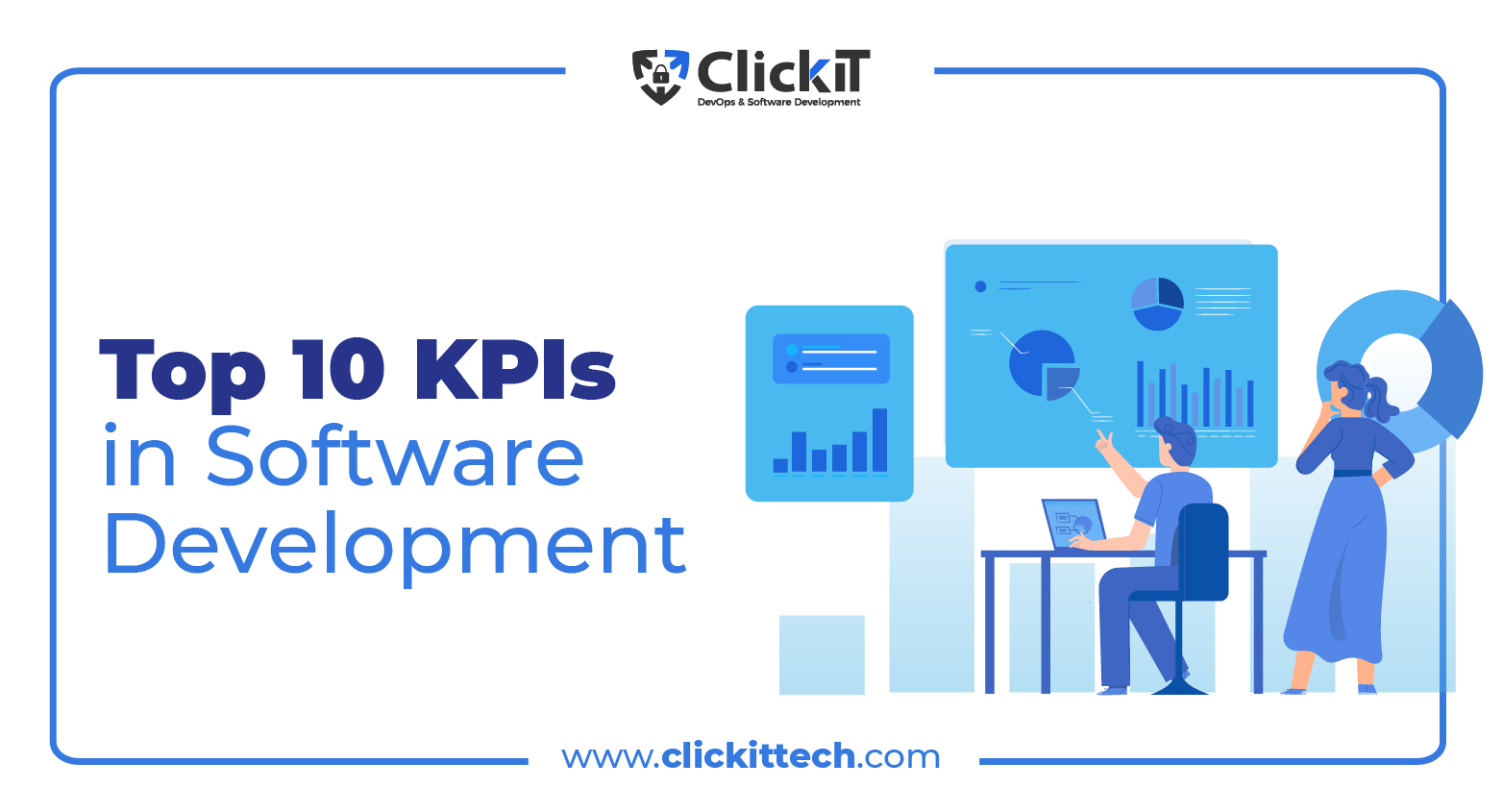


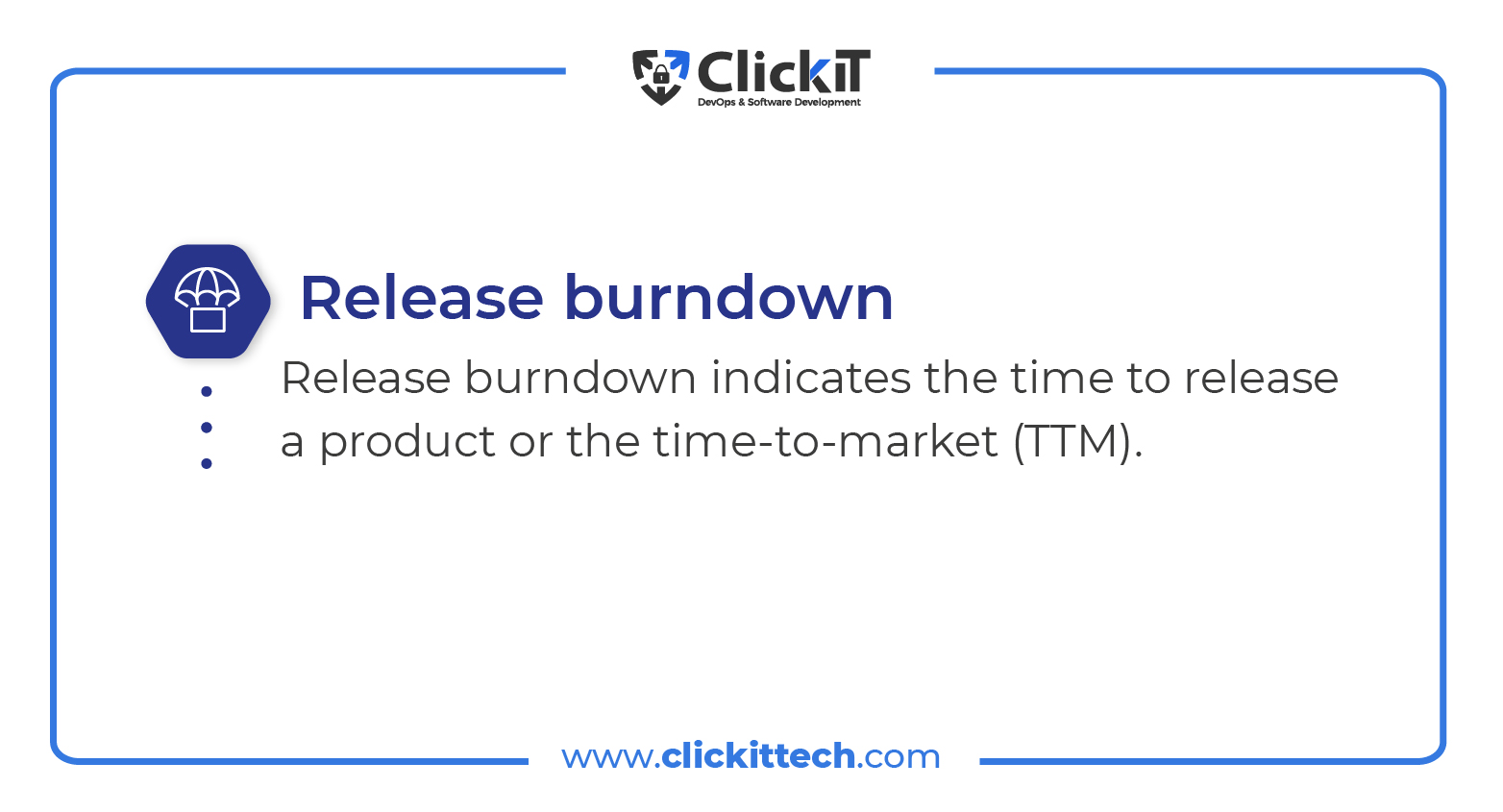

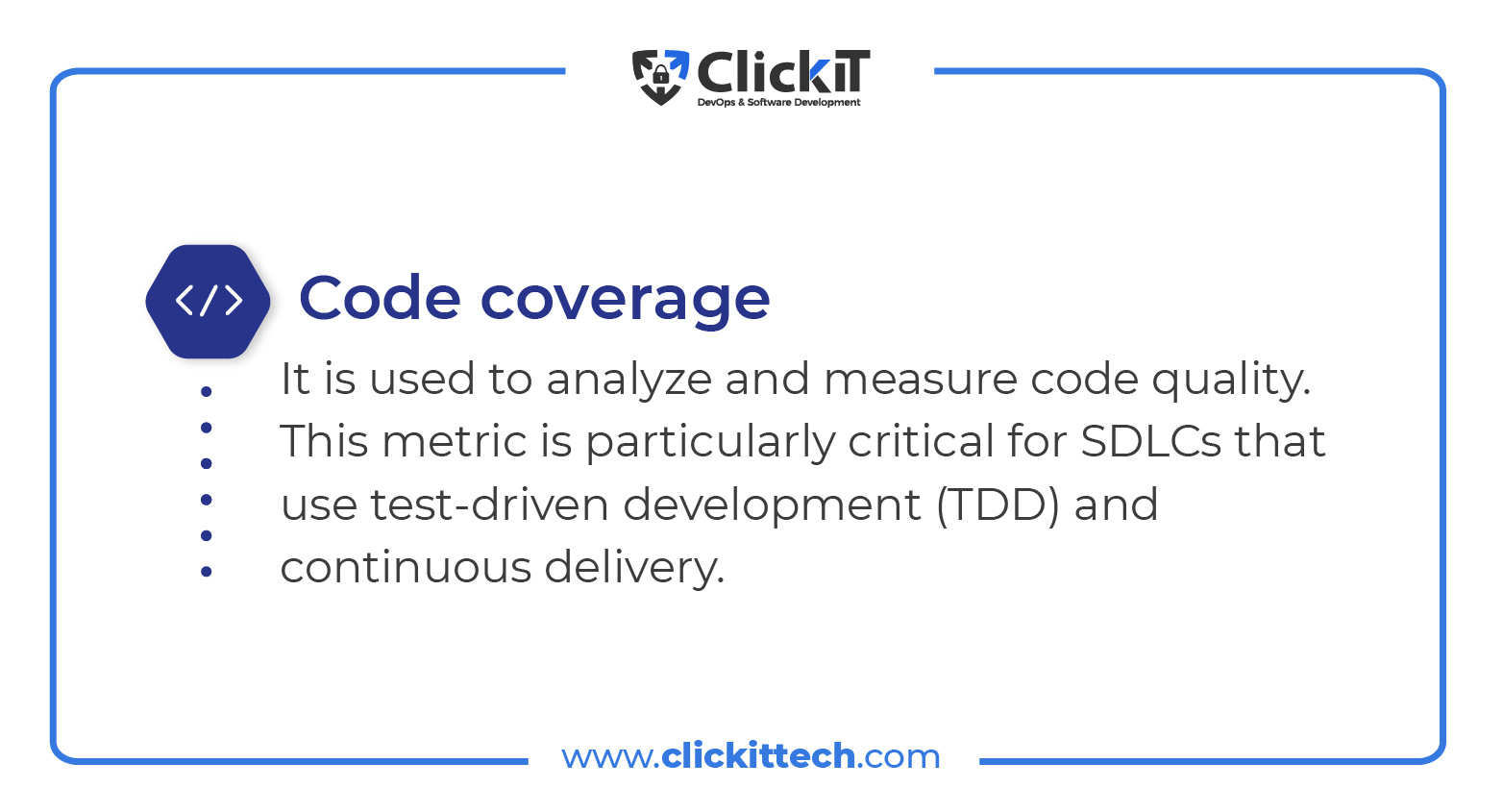

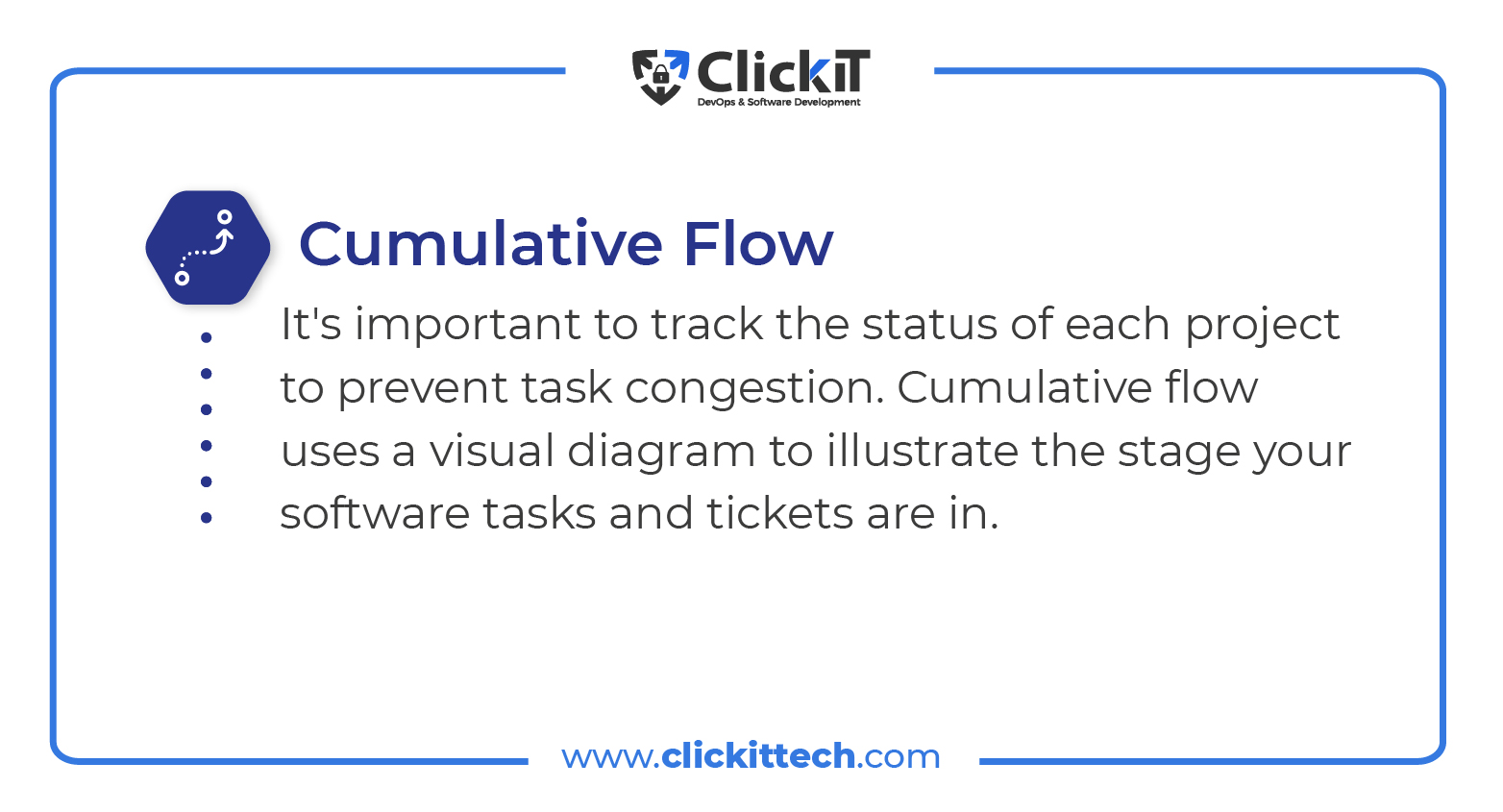
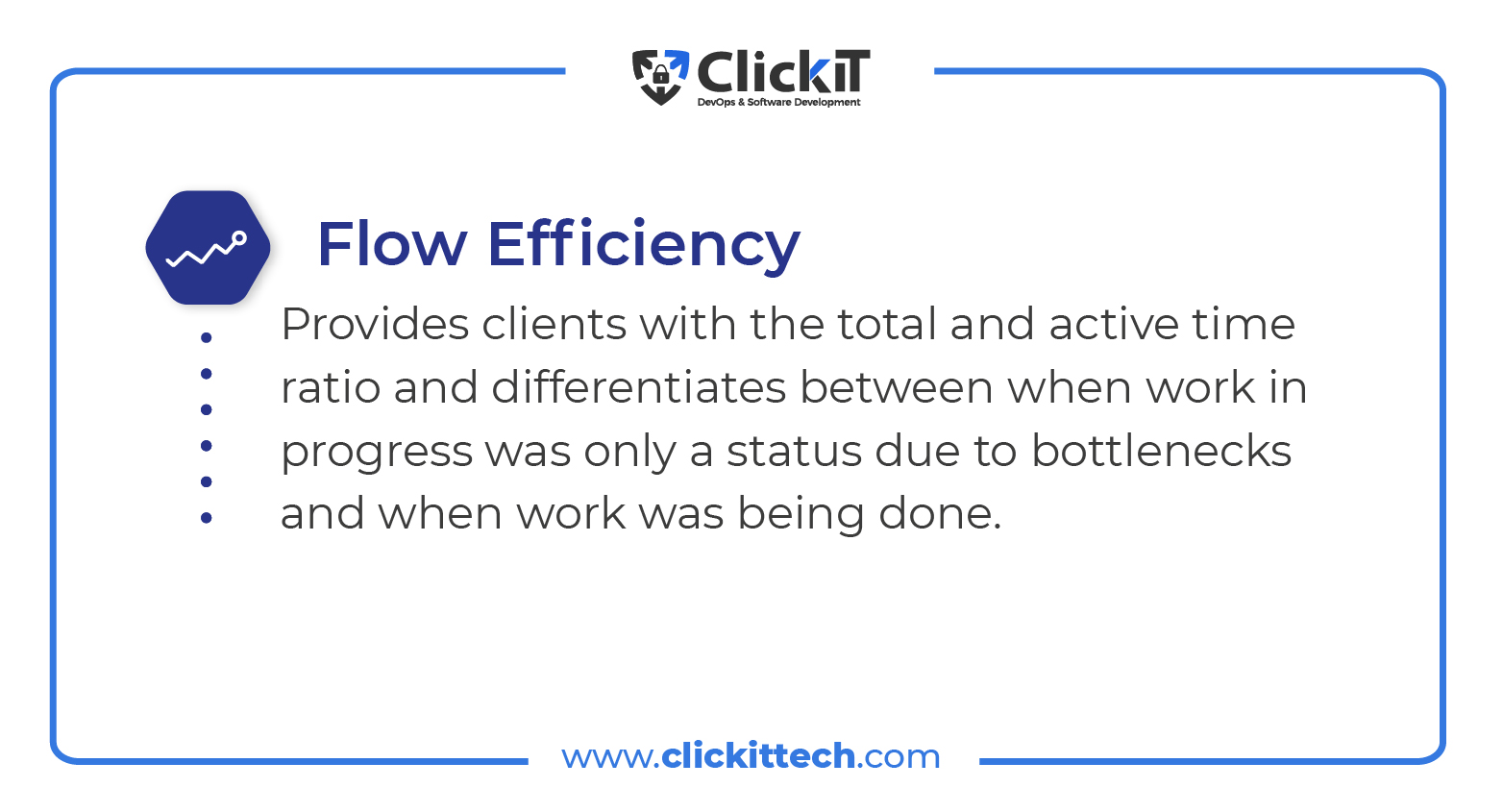
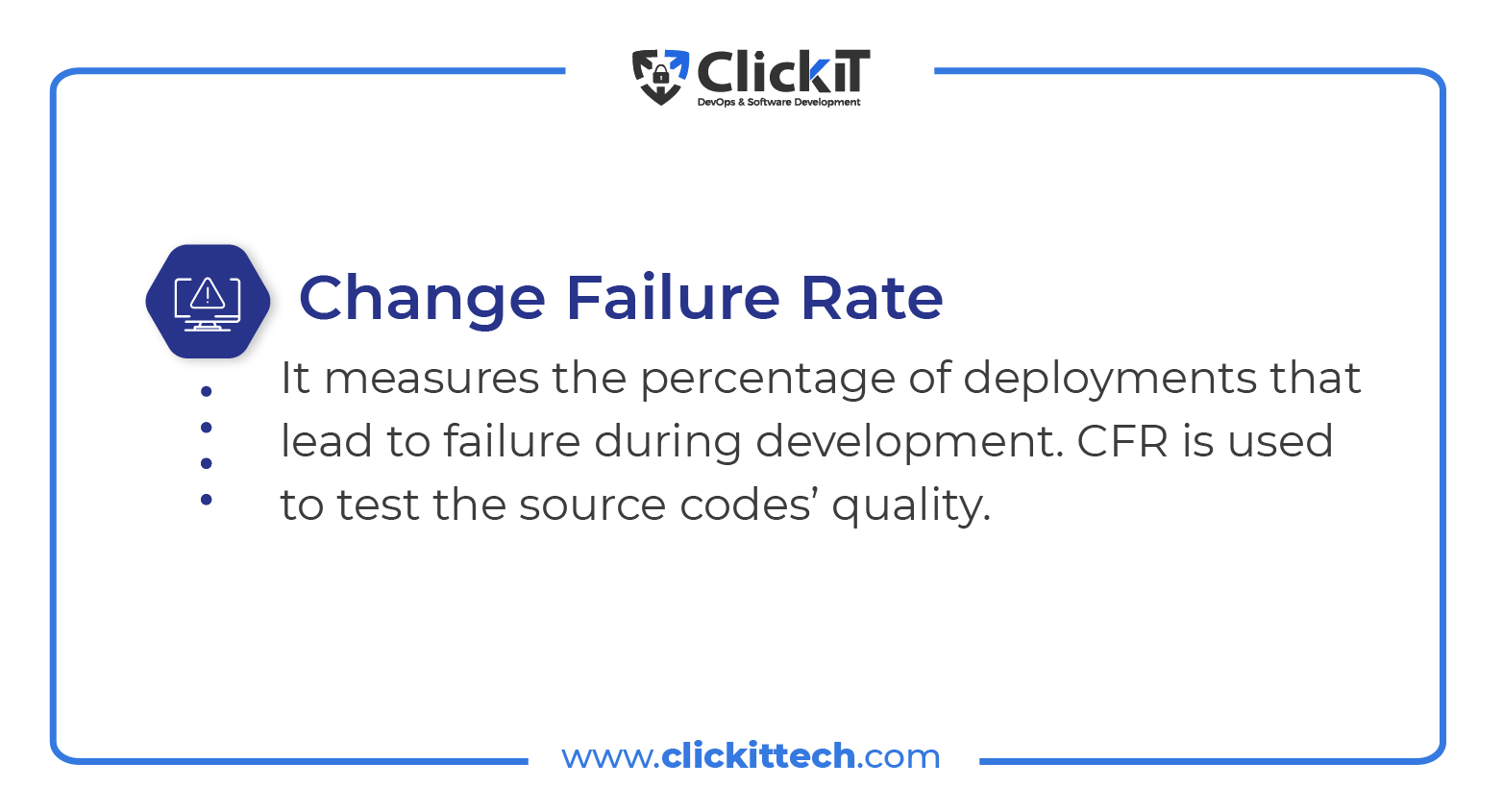
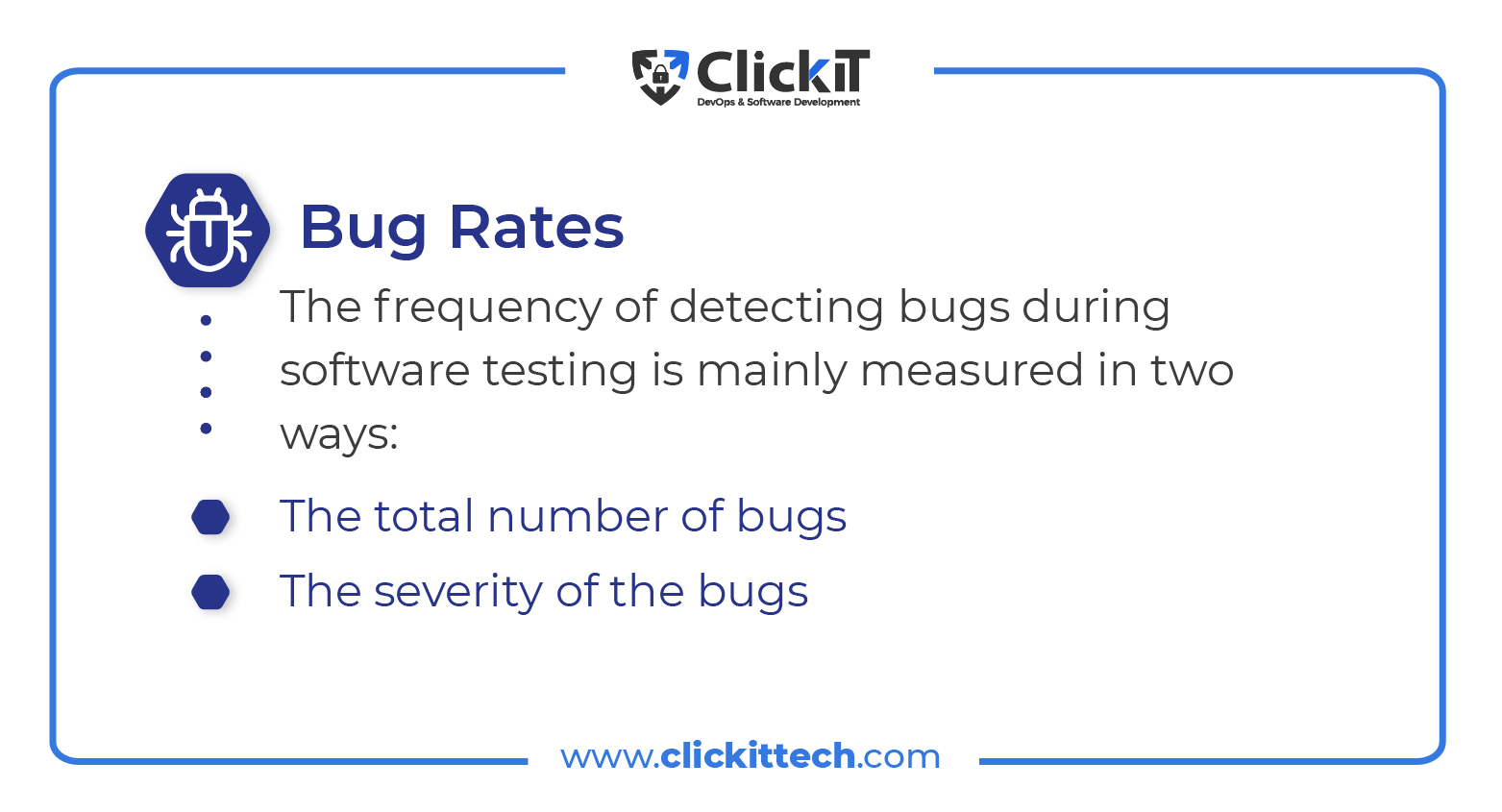
Let’s take a look at the top ten KPIs in software development:
Velocity
This KPI in software development indicates how much work can be done in a sprint. A sprint in agile development describes the specific tasks that should be completed within a specified period.
To calculate velocity, most software development teams use hours or story points, which measure the amount of effort put into a software product.
Developers prefer this KPI because it helps them plan future prints and predict the number of iterations a project may have. Typically, it takes around three sprints to know a development team’s average velocity.
For example, a team completes 100 story points in the first sprint and 120 and 140 in the second and third sprints, respectively. The average of these sprints is 120, which can help forecast how long it’ll take to complete. In the software development context, a project requiring 600 story points will require five iterations.
Sprint burndown
Software development teams use sprint burndown as a KPI to measure how much work is completed during a sprint. This is different from velocity, which is based on averages. When performance doesn’t match expectations, checking a KPI like sprint burndown can help development teams adjust and improve.
You can measure sprint burndown with special charts that represent the team’s workflow. These charts measure time against story points.
The chart has an X and Y axis, with the X representing the number of story points left in the backlog and the Y representing the time or day in the sprint. Moreover, there are two lines in a graph, one dotted and one solid, that represent the remaining work in the sprint and the current state of the workflow, respectively.
When the dotted line is over the solid line, the team is behind schedule. If, on the other hand, the dotted line is lower than the solid line, the team is on time and working efficiently.
Release burndown
Release burndown indicates the time it will take to release a product or the time-to-market (TTM). It is a broader metric than sprint burndown and can guide development teams when managing product releases.
The release burndown chart is similar to the sprint burndown chart. Sprints are represented on the x-axis, and story points are on the y-axis. The chart helps teams understand whether they’re behind, ahead, or exactly on schedule for a product release.
Such a metric also provides businesses with documented information on when they can expect ROI to start coming in post-release. It’ll also help you provide accurate updates to your customers about early releases or delays.
Cycle time
Cycle time refers to the time the team spends working on a certain task. It is an agile software development KPI that measures the team’s efficiency during the software development process.
Measuring this KPI allows you to quantify your team’s performance and also estimate how quickly you can complete future tasks. In addition, cycle time can also help you find inconsistencies in an otherwise speedy workflow.
Cycle time is calculated as X – Y, where X is a cycle’s culmination date (release date) and Y is the cycle’s beginning date (first commit time).
For example, if the first commit happened at midday on January 5 and that branch was released at 2 pm on January 15, the cycle time is 10 days and 2 hours.
Code coverage
Also known as test coverage, code coverage is a software development KPI used to analyze and measure code quality. This metric is particularly critical for SDLCs that use test-driven development (TDD) and continuous delivery.
Code coverage measures the number of successfully validated lines of code in the test procedure. This helps software teams to determine the testing of the software code. The formula for calculating code coverage percentage (CCP) is given as follows:
CCP = (A/B) x 100
Where:
A is the number of code lines the testing algorithm executes.
B is the number of code lines in an application.
Although you’re not required to reach 100%, a higher code coverage score indicates how likely it is to be bug-free. You’ll also have to do less debugging. Code coverage allows teams to identify errors made in the code and fix them beforehand.
For example, if the software the team is testing has 1000 lines of code, and the number of validated codes in the software is 500, then the CCP of the software is 50%.
Read our blog, Code review best practices.
Code Churn
Code churn can be used to evaluate code stability because it refers to how frequently code changes over time.
This metric is commonly used in DevOps to measure how many times a code is iterated due to upgrades or new features. Although code churn isn’t bad, a higher code churn means the software system is high maintenance and, therefore, high risk.
A simple formula to calculate the code churn rate is as follows:
CCR = Total lines of code in the beginning – (Lines Added + Lines Deleted + Lines Modified)
___________________________________________________________ x100
Total Lines of Code
The average CCR is between 13-30%, indicating a 70-87% code efficiency. Your software development team can target a 75% code efficiency or 24% churn rate.
Read our blog DevOps Metrics and KPIs, to learn about this important practice.
Cumulative Flow
The software development process can be complicated, with many completed, ongoing, or to-be-done tasks. It’s important to track the status of each project to prevent task congestion. So, this software development KPI uses a visual diagram to illustrate the stage your software tasks and tickets are in.
It is generally represented as a table or flow chart with different colors representing different stages, such as tasks that are in progress, backlogs, and approved or completed tasks. A different color usually represents each stage.
The colors are arranged in bands, and the width of the band correlates to cycle time. Tams can use a cumulative flow chart to stabilize workflows, especially when there are blocks along the way.
Flow Efficiency
Flow efficiency is a KPI in software development that provides clients with the total and active time ratio. During development life cycles, a work in progress doesn’t necessarily mean there’s an active ongoing task.
Sometimes, developers can’t move from one stage of the project to the other due to certain issues. It could also result from dependencies where one team cannot continue unless a stage is complete. It’s important to account for this waiting period. This metric also provides valuable insights into the distribution of work during the standstill time.
Hence, flow efficiency is used to differentiate between when work in progress was only a status due to bottlenecks and when work was actually being done. By tracking this software development KPI, you’ll be able to optimize your workflow.
Here’s how to calculate the flow efficiency rate (FER):
FER= Time spent working, i.e., Active Time
__________________________________ x 100
Total Time
For example, if the development team had ten days to add a new feature to the software but has spent two days working, the flow efficiency is 20%.
Change Failure Rate
This is one of the most useful software development KPIs to track. Change failure rate (CFR) measures the percentage of deployments that lead to failure during development. CFR is used to test the source codes’ quality.
A lower CFR indicates that your code is more bug-free and of higher quality. A higher CFR, on the other hand, means the opposite. The latter also means that your development team must commit more time, resources, and brainpower to rewrite the code and make it error-free.
This can disrupt the free flow of tasks and lead to delays in deployment.
To calculate the change failure rate:
CFR= Number of failed changes
__________________________________ x 100
Number of changes
If you had ten failed changes out of 100 total, CFR is 10%. The average change failure rate for high-performing teams is between 0% and 15%, but teams should ideally have 0%.
Bug Rates
Zero-bug software development is a myth. No software is perfect, especially if it is complex enough to be useful. Bug rate is the frequency of detecting bugs during software testing.
Bugs affect the user experience and can lead to huge costs for the business. That’s why it’s crucial to track this KPI in software development. Bugs are mainly measured in two ways:
- the total number of bugs
- the severity of the bugs.
Although you can count the total number of bugs and fix as many as possible, you should keep the severity of bugs to a minimum.
Here’s a formula to measure bug rate:
Bug Rate = Number of Bugs Detected
__________________________________ x 100
Total Number of Lines of Code
So, if you have 15 bugs for 1,000 lines of code, the bug rate is 1.5%, which is acceptable.
Read our blog, Product Manager vs Product Owner or watch our video to understand both roles.
Tools to Track KPIs in Software Development
Now that you know the important KPIs in software development you should track, some tools can help you along the way.
Many tools can be used to track different KPIs, and your choice may depend on the systems and technology stack your teams use.
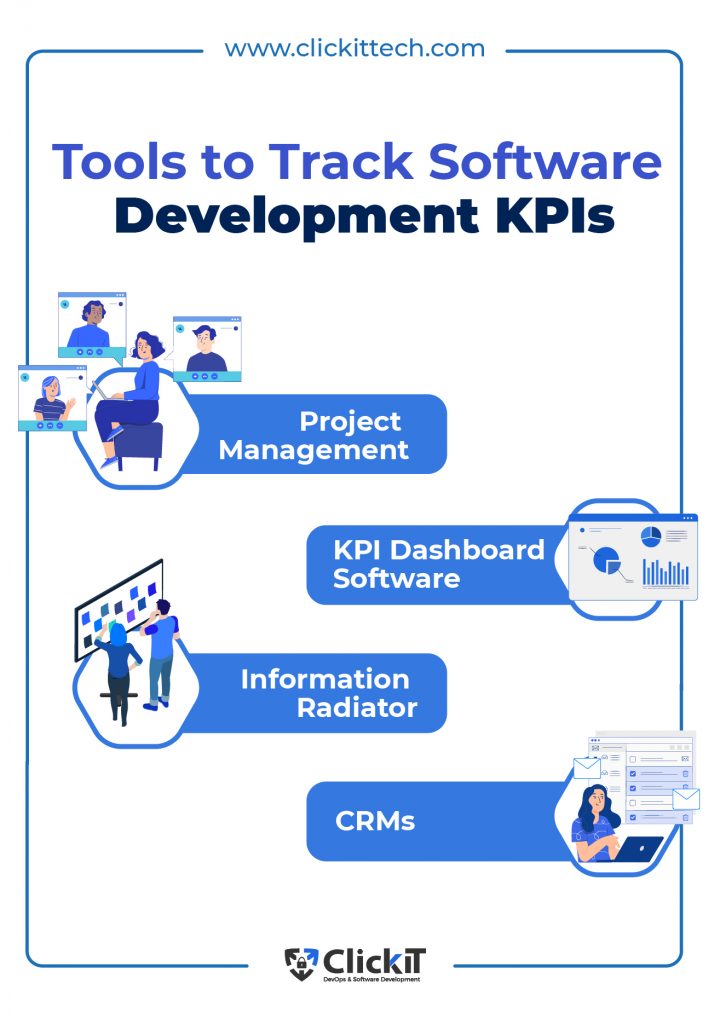
KPI software development tool: CRMs
Sales and Marketing teams tracking customer metrics can use CRM tools like NetSuite, Zoho, and Zendesk can be used to calculate Customer Lifetime Value, Customer Satisfaction, and Customer Acquisition Costs. These tools can also help manage customer support, meaning teams can track Customer Effort Scores.
KPI software development tool: Project Management
There are many project management tools for software development teams to organize and manage their tasks effectively.
These tools help project managers outline software development roadmaps and track individual progress. Examples of project management tools used in software development life cycles are Asana, Basecamp, Atlassian, and Jira.
KPI software development tool:Dashboard Software
KPI dashboard software helps business and project managers to collect, group, organize and visualize the business’s key performance indicators in software development. These tools provide an easy overview of the company’s performance and expected growth. Some examples are Datapine, Scoro, Tableau, SimpleKPI, and Target Dashboard.
KPI software development tool:Information Radiator
Also called Big Visible Chart (BVC), an information radiator is a significant graphical representation of a project’s information kept in plain sight within the shared workspace of an agile development team. Some of the common information radiators are scrum boards, impediment lists, and sprint burndown charts.
Ultimately, the tools you’ll use will depend on the functionality your team is looking for, the KPIs you want to track, and your budget.
Conclusion of KPIs in Software Development
In conclusion, tracking these Key indicators (KPIs) is essential for your software development team to monitor your performance and identify areas for improvement. By understanding these KPIs, you can set benchmarks, develop action plans, and make data-driven decisions that will help you improve your software development process.
The right software development KPIs help you scale your business while improving the software development process. It also helps you accurately measure team productivity, project timeframe, budget, and time-to-market.
ClickIT works hand-in-hand with clients and companies to provide software product development and accurately measure key performance indicators in software development. Our developers have decades of experience in different programming languages, frameworks, and development operations, including DevOps. Schedule a call today.

KPIs in Software Development FAQs
A software development KPI is a value that measures the performance of your team toward achieving set goals. It’s a metric that indicates how your development efforts align with business objectives.
Sprint burndown, cycle time, flow efficiency, code churn, velocity, bug rate, change failure rate, release burndown, and code coverage are the most important metrics to measure during software development.
Customer metrics, financial metrics, and performance metrics.
To measure software development performance, teams must use metrics that suit the current project. Tools like KPI dashboards, project management, and CRMs will also help project managers have an overview of the software production.









